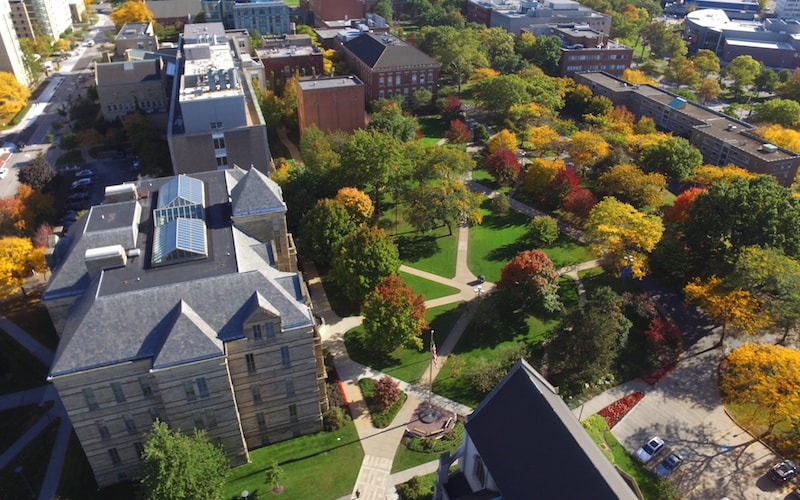Today, Cuyahoga County feels like the place to be: an increasingly young, vibrant, eclectic, and innovative cultural hothouse along Lake Erie. The Upper Midwest’s natural instinct toward community building has played a big part. Business, industry, innovation, technology, education, smart collaboration, and networking have created a dynamic that adapts rapidly to receive new enterprise while growing roots as deeply as the Industrial Age once did.
Much of it revolves around the area’s visible millennials. Cleveland and Cuyahoga County rank eighth in the nation in the growth rate of college-educated millennials (ages 25 to 34), as well as eighth in millennial workforce concentration. This is evidenced in downtown Cleveland, which had a 76 percent spike in occupancy rate among millennials between 2010 and 2012. The migration of millennials to the county has fed a recent spate of tech-centric and health-centric new businesses.
“Our main message is that Cuyahoga County is a great place to do business and to live,” Cuyahoga County Executive Armond Budish said. “We’ve seen large companies come into the county, a millennial workforce that comes in with their ideas, and we have new businesses and types of business forming.”
While the county’s population of 1.25 million is down by .5 percent from 2015, owing to the final shedding of old manufacturing jobs, the total number of employees in the county has grown to 592,000-plus – a 2.2 percent jump. Likewise, median income has jumped by nearly three percent.
A big challenge for the county was to overcome the fifty-year decline in manufacturing, once the backbone of the region, now one of several key business cogs. “There is significant opportunity for innovation and growth in this sector,” Budish explained. “With our rich history in manufacturing, we continue to develop startups, innovators in manufacturing, leading to a growth in opportunity for both businesses and workers and to a growth in employment in this sector.” Indeed, new smart manufacturers are setting up, while older companies successfully shift to the new economy and its needed technologies. While the overall employment in manufacturing is down, the productivity of the sector is up due to increased productivity and automation.
This underpins an “all hands on deck” effort to generate an efficient manufacturing footprint with smart manufacturing build-ins and new operations; central positioning in the gig economy through incubators, innovation, and smart technology; rezoning of commercial real estate to create lofts and incubators; a renowned healthcare services ecosystem; a higher education system that teams with industry and business to train leaders and workers to build the future; and a growing collaboration between STEM-educated students, their schools, and the businesses that will employ them.
“We’ve worked with our collaborative partners – the City of Cleveland Economic Development Department, The Greater Cleveland Partnership, Team NEO, Jobs Ohio, Case Western Reserve and others – to focus on innovation, and how we can always diversify what we have to offer,” Budish explained. “One of our biggest wins was Plug and Play deciding to locate an accelerator lab here, their first U.S. accelerator outside Silicon Valley, in our Global Health Innovation Center. Since we have such a big healthcare presence here, it was fitting that Plug and Play focus on healthcare tech.”
Healthcare has long been a strong suit in Cuyahoga County. It’s even stronger now. The Cleveland Clinic enjoys a strong global reputation, but it’s not alone; University Hospital has been at the forefront of healthcare innovation. Right in their backyard is a titan of deep research and innovation, Case Western Reserve University, which has the advantage of partnering with two prestigious institutions. In 2016-2017, Case Western received more than $377 million in research grants, a testament to the volume and level of work coming from there. “The combined strength of these institutions creates a real density of opportunity for innovation,” Budish said.











